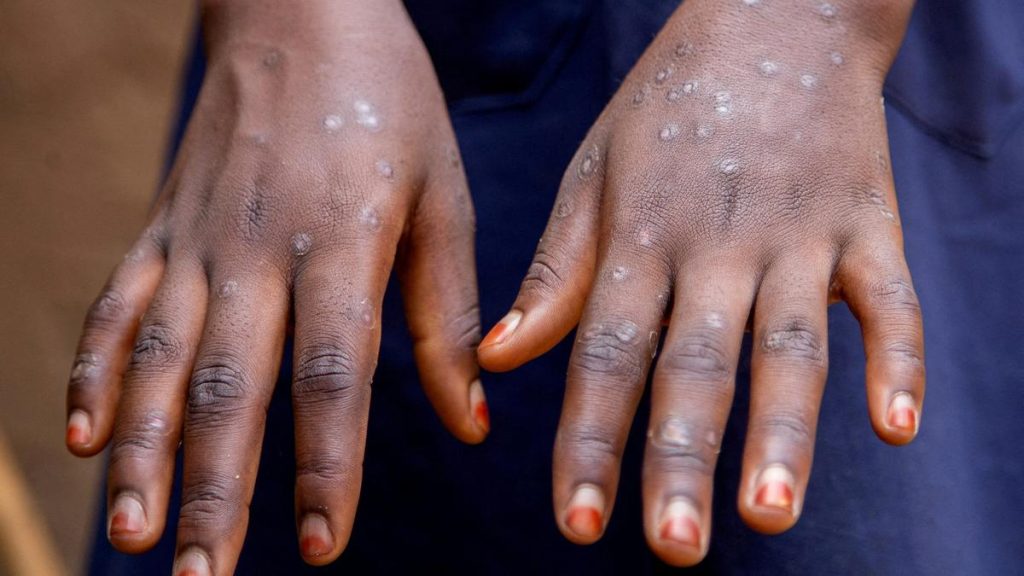
83% of mpox clade Ib cases in the Democratic Republic of the Congo are linked to sex work
| Photo Credit: REUTERS
Genomic and epidemiologic data suggest that the rapid spread of mpox clade Ib in the Democratic Republic of the Congo (DRC) was majorly (83.4%) linked to sex work within densely populated areas. Overall, 200/751 (26.6%) of the professional sex workers were infected during the study period. “The outbreak appears to be driven by sexual activity with professional sex workers linked to bars supporting the previously undocumented model of heterosexual transmission,” notes a study. According to the team led by Dr. Marion Koopmans from the Erasmus University Medical Center, Rotterdam, Netherlands, genome analysis shows evidence for considerable underdetection. The study has been accepted for publication in the journal Nature Medicine.
The mpox clade Ib outbreak in DRC began in September 2023 in South Kivu. Though the study was limited to 670 cases during the period September 2023 to June 2024, the outbreak is still continuing. As of January 5 2025, more than 9,500 laboratory confirmed cases have been notified with an estimated case fatality rate of 3.4%. Most cases belong to clade 1b, which is highly transmissible and more virulent than the clade 2 virus.
In total, 670 cases were admitted to Kamituga hospital from 17 health areas. Of the cases, 52.4% were in females, and 47.6% in males. In contrast to other outbreaks in the DRC, only 15.5% (104/670) of suspected cases were children under 16 years. Of these, 45 were less than five years of age, with the majority of children 15-24 years old. Also, the number of cases among women were more than in men (351 women and 319 men).
Researchers collected samples from hospitalised patients, along with data on residence and possible exposures. During the study period, seven deaths from mpox were noted among hospitalised patients. Four of the seven fatalities were in young adults (20-30 years), and three of the four young adults were females.
Fourteen pregnant women were hospitalised during the study period, of whom eight (57.1%) women aged 16-29 years suffered foetal loss (miscarriage). Five women suffered miscarriage in the first trimester of pregnancy, while three suffered foetal loss during the second trimester. Visual evidence of infection (pox-lesions) was present in one foetus, while one placenta tested positive for the virus. No samples were obtained from aborted foetuses, the authors write.
Based on genomic sequencing, the researchers conclude that there have been several ongoing outbreaks with different origins, age groups involved and suspected modes of transmission. However, the outbreak in South Kivu has recorded a rapid increase in the number of cases in South Kivu since the outbreak began in September 2023. The outbreak in South Kivu had a marked shift in the epidemiological pattern associated with clade Ib virus.
On September 29, 2023, the first case that was reported was linked to a bar visit. Based on this, the researchers interviewed hospitalised cases to assess potential sexual exposures. “Of the 670 hospitalized mpox cases, 83.4% (559/670) reported recent sexual contact in bars among which 44,6% were female and 38.8% were male,” the authors write.
Fifty-eight mpox genomes from 54 patients collected between October 2023 and May 2024 were sequenced. “Phylogenetic analysis and inspection of the mutation patterns revealed three potential clusters and two potential sub-clusters suggesting several different ongoing transmission chains,” the authors write.
Samples showed an abundance of APOBEC3 mutations (28/35 linking mutations and 55/82 unique mutations) indicative of continuous human-to-human transmission. “Most APOBEC3 mutations were observed in cluster-A, which includes two sequences from cases from Kamanyola. These two cases were not directly linked to each other and show up to 10 unique mutations, suggesting considerable transmission prior to their detection,” they note.
Published – February 15, 2025 10:15 pm IST







